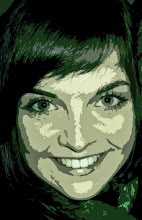In tutorial one we covered what information technology is and how this could be useful for occupational therapy practice. We also looked at the ethical issues that are involved when working with technology.
Following is the tutorial worksheet we had to complete:
1)Provide a definition of information Technology/Information Communications Technology (APA reference required).
Information Technology is “the development, implementation, and maintenance of computer hardware and software systems to organize and communicate information electronically.”
Dictionary.com. (2010). Information technology. Retrieved March 9, 2010, from
http://dictionary.reference.com/browse/information+technology
2) Consider the definition of IT you have provided. How is this form of technology prevalent in our society? How common place has it become?
Information technology is extremely prevalent and can be found almost everywhere, in fact it is almost difficult to get away from it. The majority of the nation also have some degree of competence in using information technology as it has become such a significant part in terms of communication and in how things operate. Many of human occupation revolve around these technologies, not only in business but also in leisure activities.
3) What IT device or system do you feel comfortable and competent using?
I am competent and comfortable using the computer, cell phone, camera, phone, T.V.
Often if you get some sort of understanding of one type of technology it is easier to pick up how to use a new type of technology.
4) Thinking about your own fieldwork experience consider how IT is being used in Occupational Therapy practice?
IT is very common within Occupational Therapy practice. On my Fieldwork experiences computers were the most common type of technology utilised. These were essential on the field as they provided a means for communication (e.g emailing) and research. On Fieldwork Two the clients used computers as part of intervention to reach goals such as concentration and organisation.
Phones were used for communication.
Cameras were occasionally used to capture an environment which needed to be altered. This helped to remember what the area looks like and ensured that the environment is not forgotten. Cameras were also used to take pictures of equipment to make up pamphlets for clients.
Both at the hospital and at the Stewart Centre they had started to use Nintendo Wiis to improve client participation, coordination and increase movement.
5) What ethical implications arise from capturing, sharing and transferring of information via IT devices (e.g. mobile phones) or systems (e.g.interenet).
An ethical problem that crops up regularly is that of privacy. Often information that is captured and distributed is on display for the whole world to see (especially when over the internet), and sometimes this is information that should never be shared. A simple example of this movie stars; their lives are watched constantly and every move they make is broadcasted, whether they want to keep it private or not.
Another problem that arises with that is once that information is up on something like the internet, it will most likely be there forever.
Something similar to above problems is confidentiality. Confidentiality can easily be overlooked when using information technologies.
Identity theft is another ethical issue, as well as copyright problems where it is easy to steal other people’s work and use it as your own.
6) Provide a definition of Computer Ethics (APA reference required).
‘Computer ethics is a set of moral principles that regulate the use of computers.’ These prevent privacy issues, theft and other ethical concerns that arise. Computer ethics needs to be applied because computers are continually having a greater impact on society.
TachTerms.com. (2010). Computer ethics. Retrieved March 10, 2010, form http://www.techterms.com/definition/computerethics
7) Provide a definition of Intellectual Property (APA reference required).
Intellectual property is the creations of the mind. So this can be designs used in commerce, inventions, symbols, names, images, literary works etc.
There are two categories; Industrial property and Copyright. Industrial property includes things such as industrial designs, trademarks, inventions etc.
Copyright include things such as literary and artistic works like poems, novels, films, drawings, paintings, photographs etc.
World Intelectual Property Organization. (n.d.). What is intellectual property? Retrieved March 9, 2010, from http://www.wipo.int/about-ip/en/
8) Provide a definition of Social Justice (APA reference required).
Social justice refers to “fair and proper administration of laws conforming to the natural law that all persons, irrespective of ethnic origin, gender, possessions, race, religion, etc., are to be treated equally and without prejudice.”
Businessdictionary.com. (2010). Social justice. Retrieved March 9, 2010, from http://www.businessdictionary.com/definition/social-justice.html
9) Provide a definition of Informed Consent (APA reference required)
Informed consent is the permission from a patient to perform a medical or surgical procedure, or approval for participation in a clinical study after gaining an understanding of the medical facts and possible risks.
Dictionary.com. (2010). Informed consent. Retrieved March 9, 2010, from http://dictionary.reference.com/browse/informed+consent
10) In your own words briefly summarise why (or why not) a great understanding of ITC and the ethical issues it encompasses will help us in our practice and daily lives.
It is very important to understand ITC because it can enhance many areas of life. In practice it opens up opportunities for much better intervention that could be more suitable and appropriate to the client. ITC does encompass many ethical issues however and it is essential to be aware of this as it would need to be dealt with correctly in a way that would be most suitable to the client.
Subscribe to:
Post Comments (Atom)

No comments:
Post a Comment